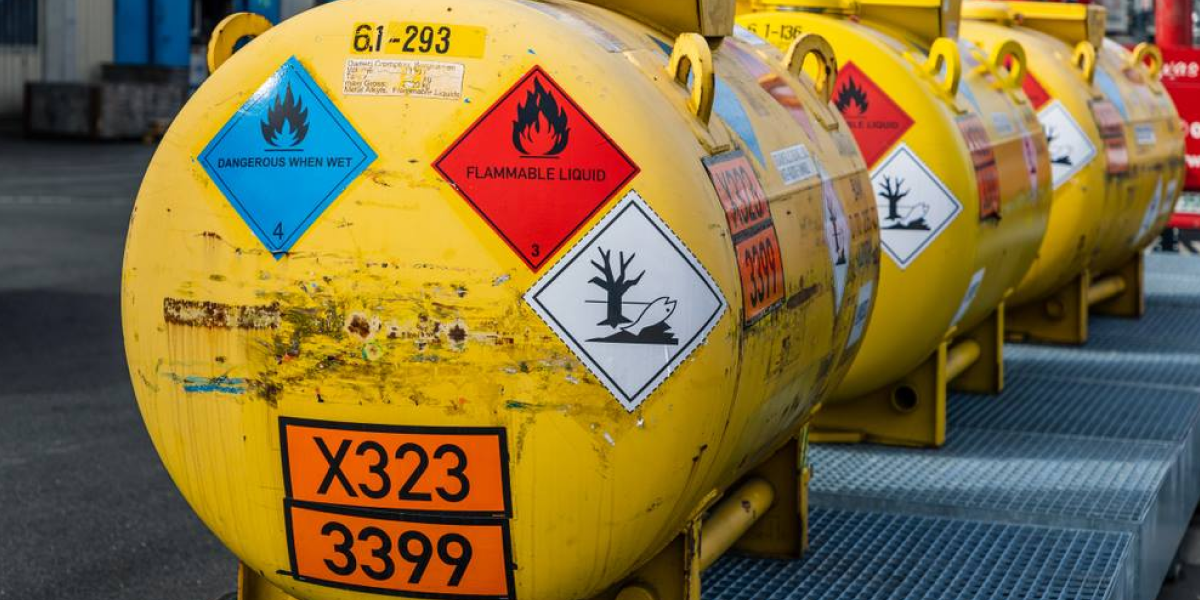Transportation of dangerous goods represents one of the most complex and responsible tasks in modern logistics. GLOBAL AF LOGISTICS, being a certified dangerous goods carrier, possesses deep expertise in classification, packaging, and transportation of all categories of hazardous substances according to international standards.
International Classification Systems
Classification of dangerous goods is based on international agreements and conventions that GLOBAL AF LOGISTICS strictly observes:
ADR (European Agreement on Dangerous goods Road transport): European agreement on international road transport of dangerous goods, valid in 49 countries.
IMDG Code (International Maritime Dangerous Goods Code): International Maritime Organization code for maritime transport of dangerous goods.
IATA DGR (International Air Transport Association Dangerous Goods Regulations): IATA regulations for air transport of dangerous goods.
RID (Regulations concerning the International Carriage of Dangerous goods by Rail): Regulations for international rail transport of dangerous goods.
Nine Classes of Dangerous Goods
GLOBAL AF LOGISTICS experts work with all nine hazard classes established by UN:
Class 1: Explosive substances and articles
Subclass 1.1: Substances with mass explosion hazard (TNT, dynamite) Subclass 1.2: Substances with projection hazard (some types of pyrotechnics) Subclass 1.3: Substances with fire hazard and minor blast hazard (fireworks) Subclass 1.4: Substances with minor explosion hazard (cartridges for firearms) Subclass 1.5: Very insensitive explosive substances (ammonal) Subclass 1.6: Extremely insensitive explosive articles
GLOBAL AF LOGISTICS holds special permits and certified personnel for working with explosives, including military and industrial explosives.
Class 2: Gases
Subclass 2.1: Flammable gases (propane, butane, acetylene) Subclass 2.2: Non-flammable and non-toxic gases (nitrogen, argon, carbon dioxide) Subclass 2.3: Toxic gases (chlorine, ammonia, hydrogen sulfide)
Our GLOBAL AF LOGISTICS specialists ensure gas transportation in specialized tanks with pressure and temperature control systems, as well as emergency relief valves.
Class 3: Flammable liquids
Includes substances with flash point not exceeding 60°C:
- Gasoline, kerosene, diesel fuel
- Alcohols (ethanol, methanol)
- Solvents (acetone, toluene, xylene)
- Paints and varnishes based on organic solvents
GLOBAL AF LOGISTICS uses special tanks made of antistatic materials with grounding systems to prevent static electricity accumulation.
Class 4: Flammable solids
Subclass 4.1: Flammable solid substances (sulfur, magnesium shavings) Subclass 4.2: Substances liable to spontaneous combustion (white phosphorus, pyrophoric metals) Subclass 4.3: Substances which emit flammable gases when in contact with water (calcium carbide, metallic sodium)
Transportation of this class requires special precautions ensured by GLOBAL AF LOGISTICS: hermetic packaging, humidity control, special fire-resistant containers.
Class 5: Oxidizing substances and organic peroxides
Subclass 5.1: Oxidizing substances (nitrates, permanganates, inorganic peroxides) Subclass 5.2: Organic peroxides (benzoyl peroxide, methyl ethyl ketone peroxide)
These substances require strict temperature control and isolation from combustible materials. GLOBAL AF LOGISTICS applies refrigeration units and monitoring systems to ensure safety.
Class 6: Toxic and infectious substances
Subclass 6.1: Toxic substances (cyanides, heavy metal salts, pesticides) Subclass 6.2: Infectious substances (medical waste, biological specimens)
GLOBAL AF LOGISTICS specialists hold certifications for handling biohazardous materials and use specialized containers with bioprotection.
Class 7: Radioactive materials
Subdivided by activity levels:
- Category I (white label): low activity
- Category II (yellow label): medium activity
- Category III (yellow label): high activity
GLOBAL AF LOGISTICS holds licenses for radioactive material transportation and uses special equipment for radiation control.
Class 8: Corrosive substances
Includes acids, alkalis, and other corrosive substances:
- Sulfuric acid, hydrochloric acid, nitric acid
- Sodium hydroxide, potassium hydroxide
- Batteries and accumulators
Transportation is carried out in acid-resistant tanks and containers with neutralization systems for possible leaks.
Class 9: Miscellaneous dangerous substances and articles
Includes substances not falling into other classes but presenting danger:
- Lithium batteries
- Asbestos
- Dry ice
- Magnetized materials
- Substances at elevated temperature
Packing Groups and Their Significance
GLOBAL AF LOGISTICS classifies dangerous goods not only by classes but also by packing groups determining the degree of danger:
Packing Group I: Substances with high degree of danger
- Requires maximum packaging protection
- Special requirements for packaging materials
- Limitations on quantity in one package
Packing Group II: Substances with medium degree of danger
- Standard packaging requirements
- Moderate transportation limitations
Packing Group III: Substances with low degree of danger
- Minimum packaging requirements
- Smallest limitations
Marking and Documentation
Proper marking of dangerous goods is critically important for safety. GLOBAL AF LOGISTICS ensures:
Hazard signs: Diamond-shaped labels with symbols and hazard class numbers
Proper shipping name: Official names according to international lists
UN number: Four-digit identification number for each dangerous substance
Package markings: Indication of package orientation, fragility, temperature limitations
Documentation includes:
- Transport vehicle approval certificate (ADR)
- Written instructions for driver
- Transport document with complete cargo characteristics
- Package conformity certificates
Compatibility and Cargo Segregation
One of the key aspects of GLOBAL AF LOGISTICS activity is ensuring proper segregation of incompatible dangerous goods:
Compatibility table determines minimum distances between different classes:
- Explosives must be separated from all other classes
- Oxidizers are incompatible with combustible substances
- Acids and alkalis require separate transportation
Emergency Procedures and Equipment
GLOBAL AF LOGISTICS maintains a comprehensive emergency response system:
Emergency cards: Detailed instructions for incident actions for each type of dangerous goods
Special equipment:
- Spill cleanup kits
- Personal protective equipment
- Primary firefighting means
- Decontamination equipment
